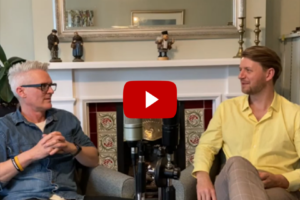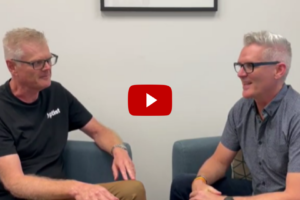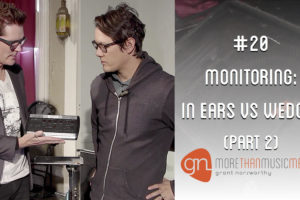Grant spoke with Dominic Schryvers from The Stations and the Gregorian Chat YouTube Channel about…
M3 VIDEO #11 – ELECTRIC GUITAR: IT’S NOT AN ACOUSTIC
By Grant Norsworthy
Almost every electric guitarist started their six-stringed experience by playing acoustic guitar first. But not all electric guitarists have made the necessary changes to their approach and playing from acoustic to make good use of the instrument.
Watch this short video. To understand the thought process behind the training video, read the blog post below it.
Is the band’s sound muddy? Is it hard to hear distinct voices from the individual instruments? Are the instrumentalists (and perhaps the congregation too) treading water in a “sonic soup” of too much, cluttered sound? Perhaps the problem is your electric guitarist.
A great deal of Church music today happens as volunteer band members read a chord chart. Less accomplished, experienced and/or prepared players of guitars and keyboards very often default to plodding their way through every chord – playing the full range of notes indicated by the chart. The result is unmusical, too full and very muddy.
Electric guitarists – especially those who have not yet more fully explored the possibilities and the best sonic roles for their instrument – lapse into the strumming patterns and chord shapes that served them well as acoustic guitarist. When electric guitarists do this – especially with overdriven or effected sounds and/or with other instruments doing the same thing – the results are messy and uninviting to the congregation. This approach might work on an acoustic guitar with its smaller, thinner, less obtrusive sound, but not anymore!
The electric guitar – in the right hands – is a wonderfully versatile instrument, capable of an incredibly wide and varied pallet of sound. With the advantageous use of electronics – pick-ups, effects, amplifier – this instrument can offer a great deal to the sound of a Church band. The most effective parts are often very simple, use few strings, higher up the neck than root position chords, show a skillful use of appropriate effects and utilize repeating obstinate patterns.
I encourage all electric guitarists – especially those who are freshly making the transition from acoustic – to listen carefully to the professional recordings of the songs they are preparing. In their personal practice time they should very intentionally explore the tones and the parts that are used there and work diligently to prepare their own parts before the band comes together for rehearsal.
In so doing, they should develop the skill to create their own parts that may borrow or even copy the professional musicians’ studio parts. They may move from there to begin arranging their own instrumentation that best fits their given Church band situation.
The electric guitarist – and indeed all the instrumentalists in the chord-chart-reading band – must develop their ability to listen, create, arrange and leave space for others. The notes they choose must serve the song, serve their band mates, serve the congregation and, ultimately serve Almighty God as they encourages the congregation to sing passionate praises.
In this instructional video for Church musicians, I speak with Evan Redwine about the need for the electric guitar to be played differently from an acoustic guitar and discuss the reason why.
Watch Video#11 – Electric Guitar: It’s Not An Acoustic again.
For more free resource videos and info, visit www.MoreThanMusicMentor.com.
And if your looking to purchase an acoustic guitar, you should first check out this great article from Beginner Guitar HQ. It’s a comprehensive buyers guide!


